


 |
 |
 |


The researchers who showed Johan Oldenkamp the way to Wholly Science are mentioned below, chronologically ordered based on their birthdates. This does not necessarily mean that all these wayshowers were correct in all their claims. By not throwing out the baby with the bath water, Wholly Science has been able to unite all that is veritable into a single framework of understanding that is internally consistent, logical, and most of all, relatively easy to understand.
 |
AkhenatenBeing born in 1380 BCE as the heir of Amunhotep III, who was the Pharaoh of Khemit (meaning: “The Black Land”, nowadays known as Egypt) since 1388 BCE), he was originally named Amunhotep IV. The name ‘Amunhotep’ means “Amun is satisfied”. When his father died in 1351 BCE, the 29-years-old Amunhotep IV became the next Pharaoh. In 1346 BCE, in the fifth year of his reign, he converted to the worshipping of Aten. Aten refers to the Glory of Light Consciousness, present in for instance sunlight. He was then 33 years of age, and re-named himself ‘Akhenaten’, meaning “Effective for Aten”, “Beneficial to Aten”, or “Servant of Aten”. Akhenaten introduced Light-based monotheism to the Eighteenth Dynasty of ancient Khemit. He abolished the worshipping of Amun and ended the practice of animal sacrifice. As Akhenaten believed it to be sinful to take away any life given by Aten, he became a vegetarian. He also created a new capital far away from the Amun-worshipping in the Karnak temple complex in Thebes (nowadays named Luxor). He named this new city ‘Akhetaten’, meaning “Horizon of the Aten” (nowadays named Amarna). His life partner was Nefertiti. Her name means “the beautiful one has come forth”, which according to tradition did her justice. In 1342 BCE his heir was born, but Nefertiti was not his mother. Born from “the younger lady”, he named his son ‘Tutankhaten’, meaning “Living Image of Aten”. However, in 1334 BCE, at the age of 46 years, Akhenaten was murdered by the Amun priesthood. Before his 9-years-old son became Pharaoh, these priests first renamed this boy as “Tutankamun”, meaning “Living Image of Amun”. At the age of 18, the Amun priesthood also murdered him. In the meantime, the Amun worshipping became fully restored, and all changes made by Akhenaten were undone. All this is explained in Module 3 on Atenism of Level 4 of the Wholly Science Education Program. |
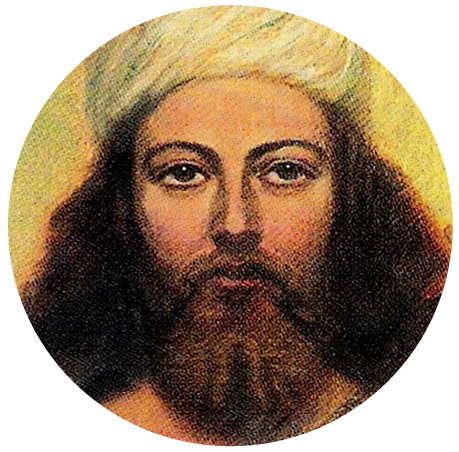 |
ZoroasterZoroaster (628 BCE, possibly Rhages, Iran – 551 BCE) lived in the eastern part of the Iranian Plateau. He was a native speaker of Old Avestan, formerly also known as “Zend”. He wrote both the Yasna Haptanghaiti (meaning: “Worship in Seven Chapters”), as well as the 17 Gathas hymns. The name Zoroaster originated from a phonetic transliteration or semantic substitution of the Avestan zaras with the Greek zoros (literally meaning: “undiluted”) and the Avestan ustra with the Greek astron (meaning: “star”). In Old Iranian, this name became Zarathushtra. At the age of 30 years old, Zoroaster received his illumination from Ahura Mazda. The literal meaning of the word Ahura is “Light”, but also “Lord”, while Mazda means “wisdom”. In other words, the ‘Undiluted Star’ (Zoroaster) received his illumination from the Light of Wisdom (Ahura Mazda). From this, Zoroastrianism (after becoming a vegetarian) developed as a monotheistic spiritual doctrine. It teaches that both Spenta Mainyu (Principle of Goodness) and Angra Mainyu (Principle of Evil, also known as Ahriman) were created by the One Overall God. Furthermore, the End Times Prophecy of Zoroaster is remarkably similar to the Bible’s final book, the Revelation to John. He died at the age of 77 years. Some sources claim that he was murdered at the altar by the Turanians in the storming of Balkh. All this is explained in Module 4 on Mithraism of Level 4 of the Wholly Science Education Program. |
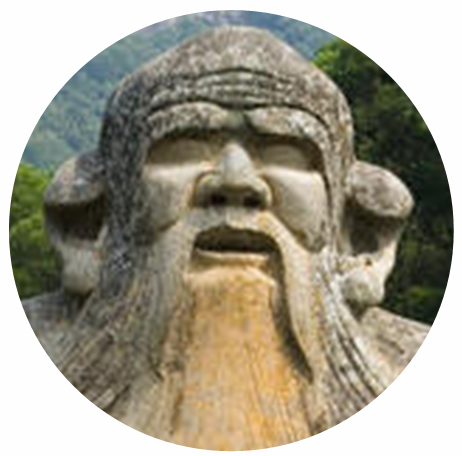 |
Lao TzuLao Tzu (about 604 – about 531 BCE) from ancient China, also spelled Lao Zi or Lao Tze in our alphabet, wrote the book entitled “Tao Te Ching”, also spelled “Dao De Jing” or “Tao Teh Ching” in our alphabet, literally meaning: the book (Ching or Jing) on the inner Force (De, Te, or Teh) of the Way (Dao or Tao). The probably best way to describe Tao (or Dao) is in the statement: “There is no way home; home is the way.” (meaning: Tao is the way of our true home.). |
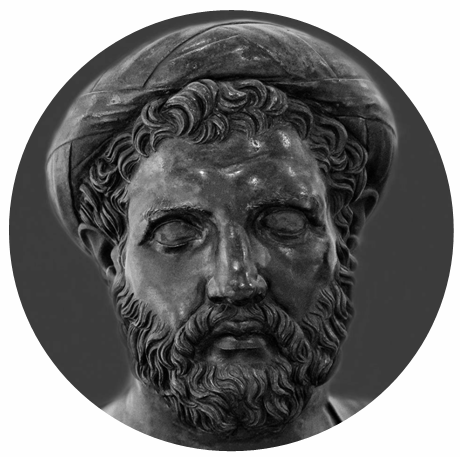 |
PythagorasPythagoras was born in or about the year 570 BCE on the island of Samos (which was at the height of its prosperity), very close to the mainland of Turkey, as the son of a wealthy merchant and gem-engraver Mnesarchus and his wife Pythais. Traveling with his father, Pythagoras was able to develop widely from an early age. After studying with various philosophers, he became a priest at the age of 22, specializing in number theory, at an initiation school in Sidon (nowadays the third-largest city in Lebanon) in Phoenicia. He then learned geometry and astronomy from both the Egyptians and Chaldeans, and music and other sciences from Persian Magi (magicians). Afterwards, the all-round scientist Pythagoras continued to travel and also lived in Italy for a while. About the year 495 BCE, the vegetarian Pythagoras died at the age of about 75 in either Croton or Metapontum. |
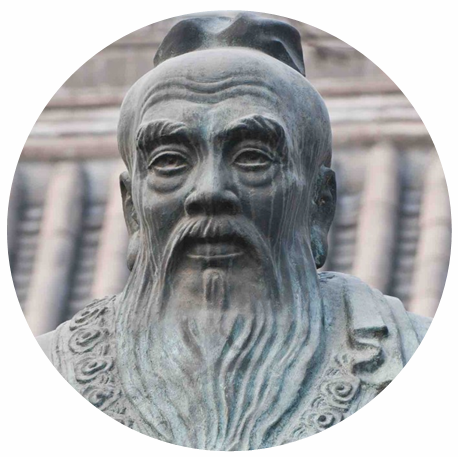 |
ConfuciusKong Qiu (551 BCE September 28 – 479 BCE) was most often known as Kongzi (literally: “Master Kong”). He was also known by the honorific Kong Fuzi (literally: “Grand Master Kong”), which was Latinized as “Confucius” by 16th-century Jesuit missionaries to China. He espoused the well-known principle “Do not do to others what you do not want done to yourself”, also known as the Golden Rule. |
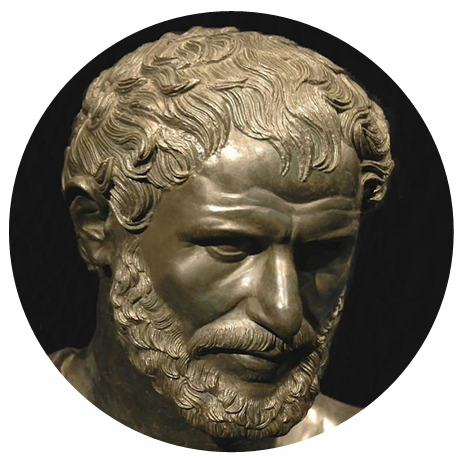 |
HeraclitusHeraclitus of Ephesus (about 535 – about 475 BCE) from ancient Greece was an all-round scientist. He spoke the famous Greek words (rewritten in our alphabet) “Panta Rhei”, meaning “everything flows”. |
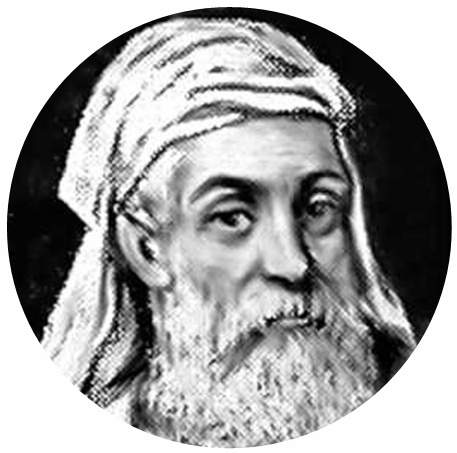 |
EmpedoclesEmpedocles of Acragas, Sicily (about 490 – about 430 BCE) was influenced by Pythagoras, and he was a vegetarian as well. Empedocles stressed the dynamics between the Essences of Earth, Air, Water, and Fire. His Cosmic Cycle is based on the everlasting conflict between Love and Strife, resulting in Harmony and Chaos at both ends, and Life in between. |
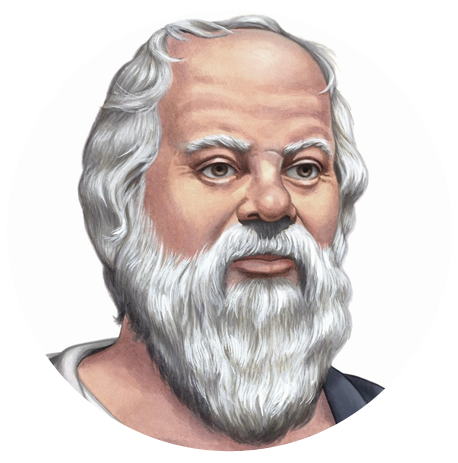 |
SocratesSocrates was born around 470 BCE in a suburb of Athens, Greece. He became a great philosopher (literally meaning: ‘lover of Wisdom’). He made no writings himself, but his student Plato did. Through these writings we know how wise Socrates was. To acquire wisdom, Socrates applied his dialectic method of inquiry, with which a problem gets solved by breaking it down into a series of questions. According to the Oracle at Delphi, he was the wisest man alive at that time. Socrates refused to accept this, as he did not think of himself as exceptional wise. To find the truth, he questioned men considered wise by the people of Athens. Their answers not only showed that he was indeed much wiser than them, it also was the reason why he eventually was sentenced to death, caused by the drinking of a mixture containing poison hemlock. This murder was executed in the year 399 BCE, when he was 71 years old. However, as Socrates had stated that ‘philosophy is training for death’, he was well prepared for this. |
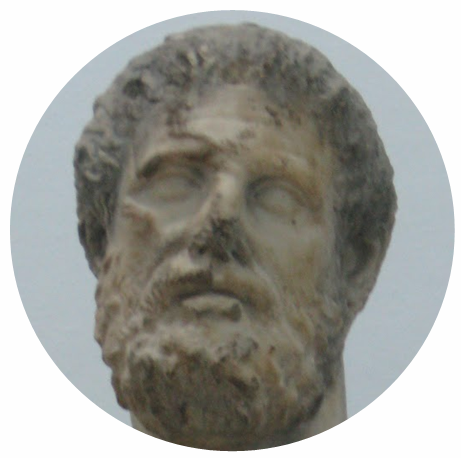 |
HippocratesHippocrates of Cos (about 460 – about 375 BCE) from ancient Greece was a famous physician who stated that health results from the balance between the four humours (or temperaments). His Greek name means “horse tamer” (hippos means “horse” and kratos means “power”). |
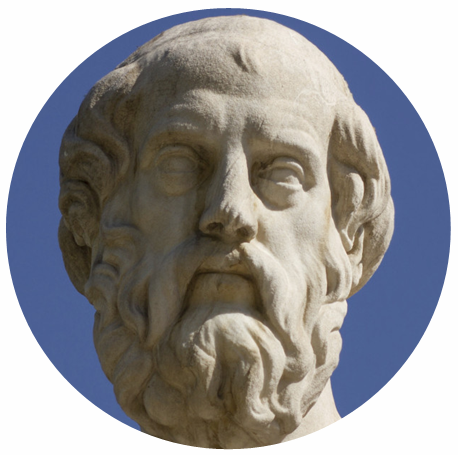 |
PlatoPlato (429 – 347 BCE) was perhaps the first Wholly writer on our home planet. Actually, his birth name was Aristocles. However, as he was square-built, his nickname became “broad” in Greek, which is “Platon” in Latin letters. In English, this name became Plato. Around 360 BCE, he wrote Timaeus, in which he also gave a very detailed description of Atlantis. |
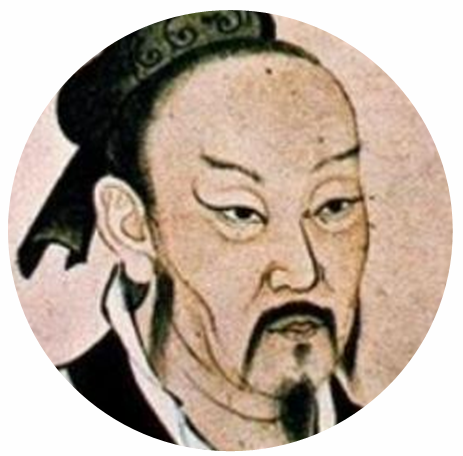 |
Chuang TzuChuang Tzu (about 399 – about 295 BCE) from ancient China, also spelled Zhuang Zi, Zhuang Zhou, or Chuang Chou. He wrote a book known by its author’s name. His most famous statement is: “The perfect man employs his mind as a mirror. It grasps nothing; it refuses nothing. It receives, but does not keep.” |
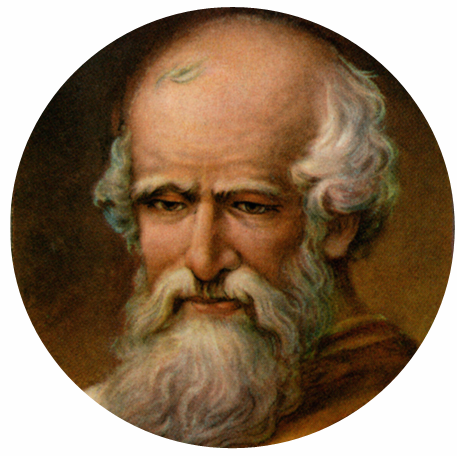 |
ArchimedesArchimedes of Syracuse (about 287 – about 212 BCE) was an all-round scientist who became the greatest mathematician ever. |
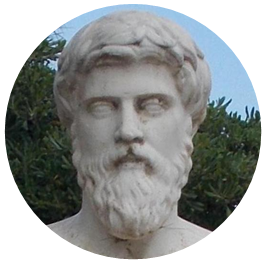 |
PlutarchPloútarkhos (also spelled Ploutarchos) was born around the year 46 CE to a wealthy family, who lived about 80 kilometers (or 50 miles) east of Delphi, Greece. He became a philosopher, biographer, essayist, and priest at the Temple of Apollo in Delphi. His greatest contribution to Wholly Science is explaining the relation between a human’s soul and the moon Luna, which he referred to as the Realm of Persephone (1, 2, 3, & 4). He stated: “The result of soul and body commingled is the irrational or the affective factor, whereas of mind and soul the conjunction produces reason; and of these the former is source of pleasure and pain, the latter of virtue and vice.” He died after 119 and before 125 CE at Delphi. |
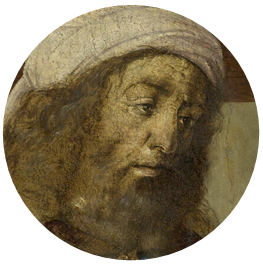 |
Claudius PtolemyClaudios Ptolemaios (in transliterated Greek, Latinized as Claudius Ptolemaeus, and Anglicized as Ptolemy) was born around the year 100 CE in the city of Alexandria (Egypt, then part of the Roman Empire). As a mathematician, astronomer, astrologer, geographer, and music theorist, he wrote about a dozen scientific treatises. Around 170 CE he died in his hometown. |
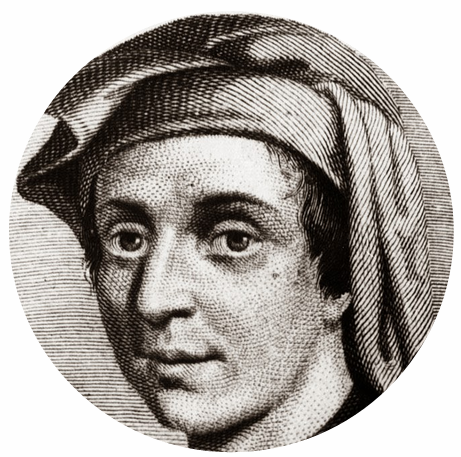 |
Leonardo FibonacciLeonardo Pisano Bigollo (about 1170 – about 1250 CE) was also known as Leonardo of Pisa, Leonardo Pisano, Leonardo Bonacci, Leonardo Fibonacci, or simply Fibonacci. He was perhaps the first Wholly mathematician. |
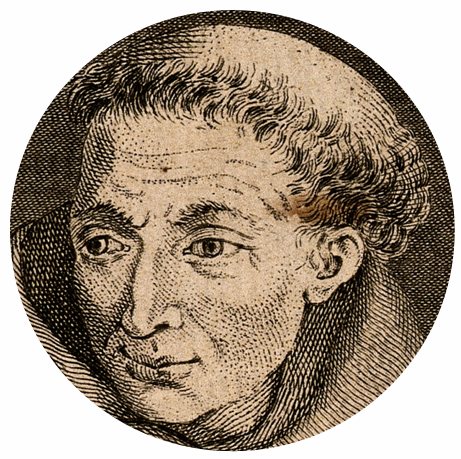 |
Roger BaconRoger Bacon (about 1214 – about 1292), Latinized as “Rogerus Bacon”, was one of the earliest European advocates of the scientific method. He also discovered the use of concave mirrors for overcoming the limitations by time and space. |
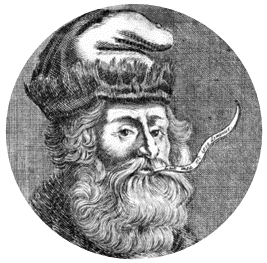 |
Ramon LlullRamon Llull (Latinized as both “Raimundus Lullus” and “Raymundus Lullius”) was born about 1232 at the island of Majorca (now Mallorca, Spain). He was brought up at the royal court of the Kingdom of Majorca, where he learnt Arabic from the Moorish population. He wrote not only in Latin, but also in Catalan (which subsequently inspired other scientists to write in their native language as well). In about 1265, he left the island after he experienced mystical visions and undertook missionary work in the regions South and East of the Mediterranean. His main work is the Ars Magna (Latin for ‘The Great Art), which he wrote from 1305 to 1508, comprising of a number of treatises including ‘The Tree of Knowledge’ and ‘The Book of the Ascent and Descent of the Intellect’. This work was inspired by another mystical experience in which he saw the whole universe reflecting the divine attributes. He next reduced all knowledge to first principles and determined their convergent point of unity. Llull used logic and mechanical methods involving symbolic notation and combinatorial diagrams to relate all forms of knowledge. Around early 1316 Ramon Llull died after being stoned in North Africa either at sea or shortly after reaching Majorca, where he was buried. |
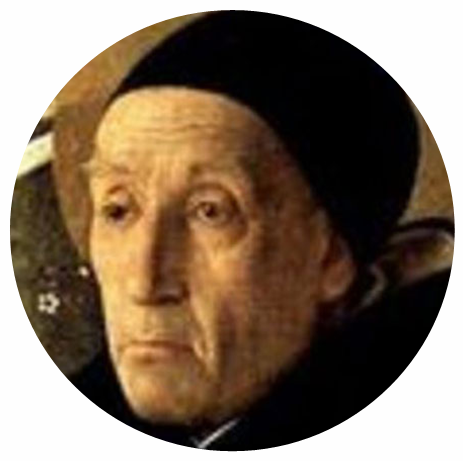 |
Meister EckhartEckhart von Hochheim (about 1260 – about 1327), commonly known as Meister Eckhart, was an enlightened mystic who understood the essence of God. |
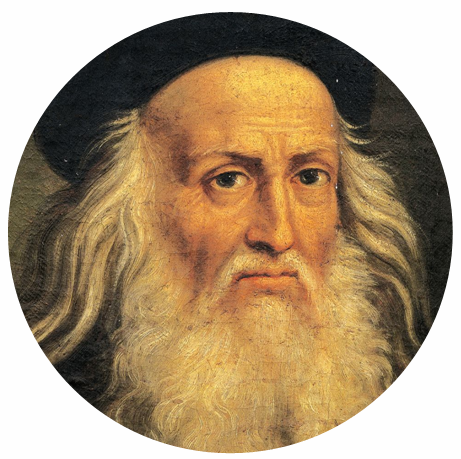 |
Leonardo da VinciLeonardo di ser Piero da Vinci (1452 April 15 – 1519 May 2) was an all-round scientist. He lived in Italy. He was a vegetarian. |
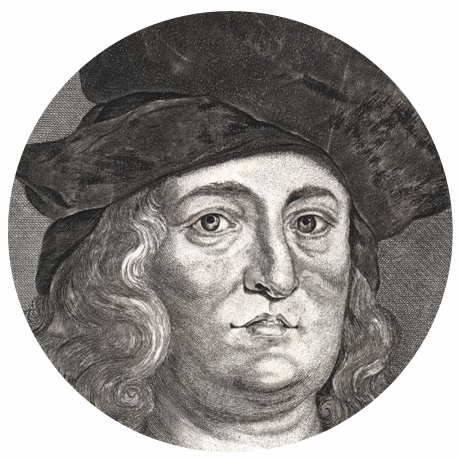 |
ParacelsusPhilippus Aureolus Theophrastus Bombastus von Hohenheim (1493 November 11 (or December 17), Einsiedeln, Switzerland – 1541 September 24, Salzburg) later changed his name into ‘Paracelsus’. He was an all-round scientist specialized in Alchemy, which he named in Latin Spagyricus. He believed that each of the four primary Essences (Earth, Air, Water, and Fire) consists of a subtle, vaporous principle and a gross corporeal substance. He is well known for his marvelous quotes. |
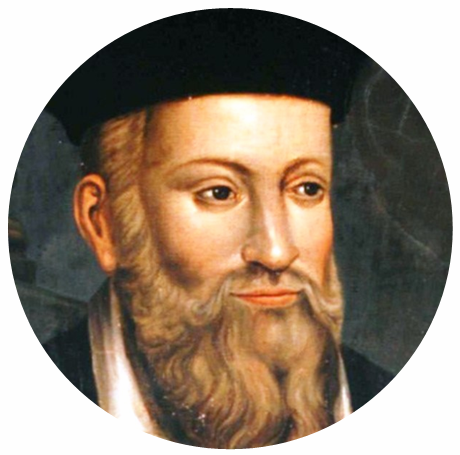 |
NostradamusMichel de Nostredame (1503 December 14 – 1566 July 2) developed the horary chart system of Planetary Astrology. |
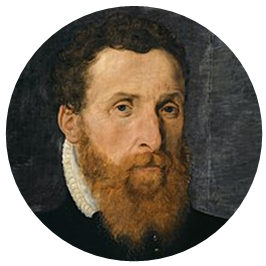 |
Leonhard ThurneysserLeonhard Thurneysser was born on 22 July 1531 in Basel, Switserland, as the son of Ursula and Jacob Thurneysser, a goldsmith. He took up his father’s profession and also studied with Johannes Huber (1507 – 9 February 1571), a physician and alchemist resident at Basel. Later in life, metallurgist and scholar Leonhard Thurneisser worked as personal physician at the court of Johann Georg (11 September 1525 – 8 January 1598), the Elector of Brandenburg. In 1570, his alchemical text-book in verse was publised, titled ‘Quinta Essentia’ (with a second edition in 1574). His other famous book was titled ‘Archidoxa’, meaning ‘First Notion’ (first edition in 1569). The full translated title of its second edition (in 1575) was: ‘Archidoxa. Containing the truth about the modus, course, and trajectory and the secrets of the influence and power of the planets and stars and mutations of the whole firmament and explanations of all subtilities of the fifth metal being and an abstract and understanding of the astrolabe and all circles, characters, and signs.’ Leonhart Thurneisser zum Thurn died on 8 July 1596 in Cologne, Germany. |
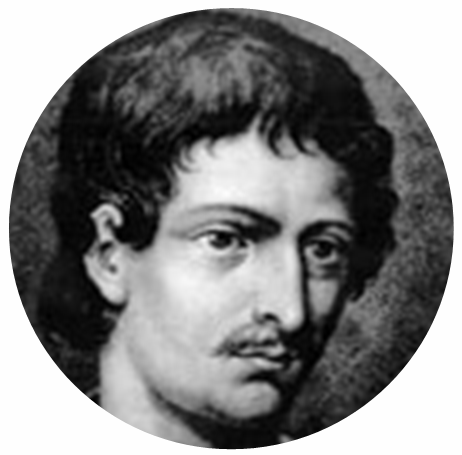 |
Giordano BrunoGiordano Bruno born Filippo Bruno (1548 – 1600 February 17) was an Italian philosopher, mathematician, and astrologer. He was one of the first to see the stars as distant suns with their own planets. He also claimed that the universe is infinite. |
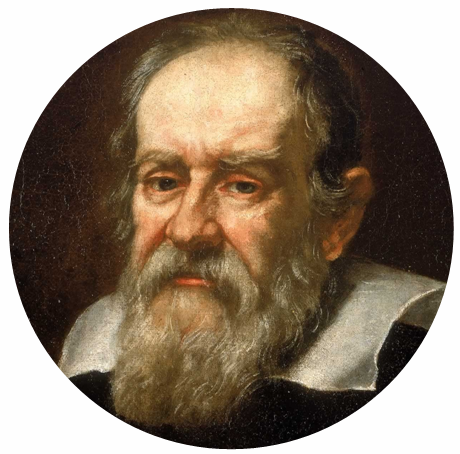 |
Galileo GalileiGalileo Galilei (1564 February 15 – 1642 January 8) was an Italian astronomer, physicist, engineer, philosopher, and mathematician. His advocacy of heliocentrism was controversial within his lifetime, when all others still subscribed to the view that Terra stood motionless at the center of the universe. |
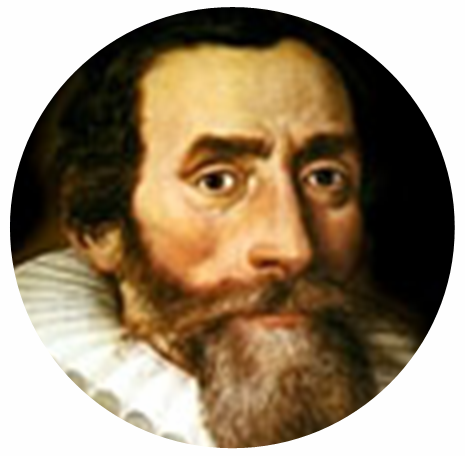 |
Johannes KeplerJohannes Kepler (1571 December 27 – 1630 November 15) was a German mathematician, astronomer, and astrologer, who discovered the elliptic nature of planetary motion. |
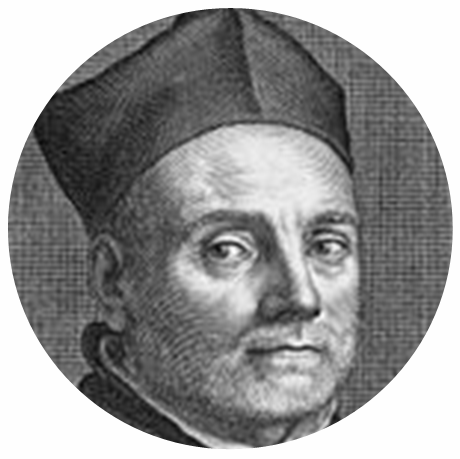 |
Athanasius KircherAthanasius Kircher (1602 May 2 – 1680 November 27) was a Jesuit scholar and polymath from Germany who followed a syncretic approach to subjects like Egyptology, geology, music theory, and magnetism, and published around 40 major works. |
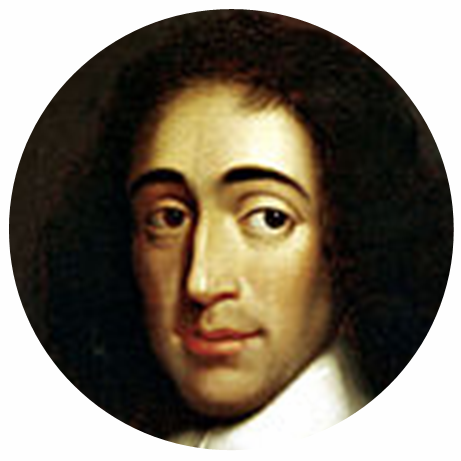 |
Baruch SpinozaBaruch Spinoza (1632 November 24 – 1677 February 21), who used “Bento” (meaning: blessed) as his first name, said that whole of nature was the conscious body of God. |
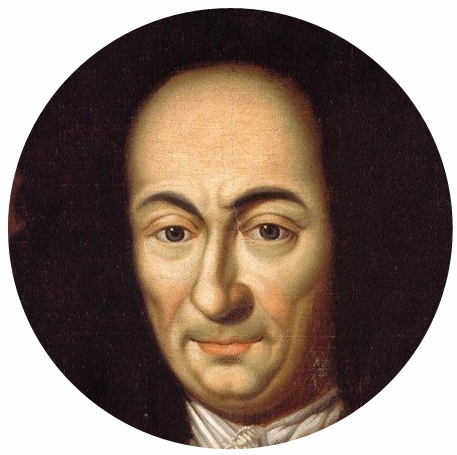 |
Gottfried LeibnizGottfried Wilhelm von Leibniz (1646 July 1 – 1716 November 14) postulated the idea of a monad, being a natural conscious unit. |
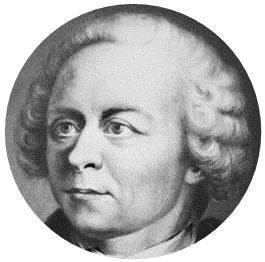 |
Leonhard EulerLeonhard Euler was born on 15 April 1707 in Basel, Switzerland. He became an all-round scientist, as well as an engineer. He is most known for laying down the foundation for modern mathematics. He died on 18 September 1783 in Saint Petersburg, Russian Empire. |
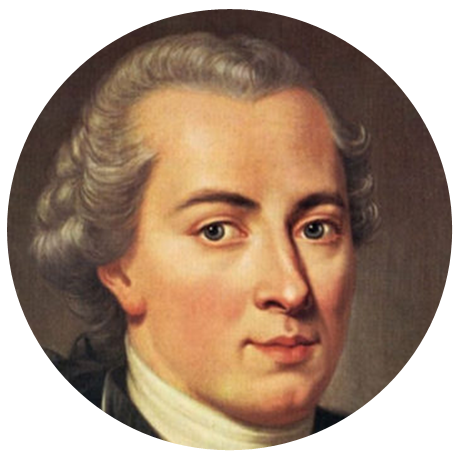 |
Immanuel KantImmanuel Kant was born on 1724 April 22 in Königsberg, Prussia (nowadays the city of Kaliningrad, Russia). He stressed the essential difference between das Ding an sich (the thing in itself) and das Ding für mich (the thing for me), stating that the former exists independent of the latter. To clarify this, Wholly Science names the former the Proto World, and the latter the Shadow World. This great German philosopher died aged 79 on 1804 February 12 in his birthplace. |
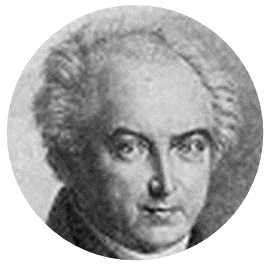 |
Johann Daniel TitiusJohann Daniel Tietz was born on 1729 January 2 in Konitz (Chojnice; nowadays northern Poland) to Jakob Tietz and Maria Dorothea Hanow. He attended school in Danzig (Gdańsk) and studied at the University of Leipzig (1749 – 1752). As was customary in those days, he Latinized his surname to Titius when he became a university professor at Wittenberg, Germany. He formulated the hypothesis that the heavenly bodies of our solar system orbit at semi-major axes in a function of planetary sequence. Later on, this theory was elaborated by Johann Elert Bode (1747 – 1826). Johann Daniel Titius died on 1796 December 16 in Wittenberg. |
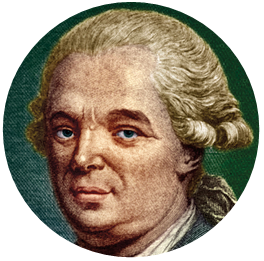 |
Franz Anton MesmerFranz Friedrich Anton Mesmer was born on 1734 May 23 in the village of Iznang, on the shore of Lake Constance in Swabia, Germany, as a son of master forester Anton Mesmer (1701 – after 1747) and Maria Ursula Michel (1701 – 1770). After studying at the Universities of Dillingen and Ingolstadt, he took up the study of medicine at the University of Vienna in 1759. In 1766, he published his doctoral dissertation (in Latin) in which discussed the cosmic influences of the celestial bodies of our solar system on the human body in general, and on disease in particular. Its title was “De planetarum influxu in corpus humanum” (On the Influence of the Planets on the Human Body). In it, he described the tides within the human body that result from the movements of our sun Helios and our moon Luna. Later on, he investigated the natural energy transfer between all animated lifeforms and inanimate objects, which he named in German “Lebensmagnetismus”. This name literally means “Life Magnetism”, but it became usually translated as “animal magnetism”. It is the metaphysical force of life, possessed by all natural lifeforms. He elaborated on that in German in his books published in 1775, titled “Sendschreiben an einen auswärtigen Arzt über die Magnetkur” (Letters to a foreign medical practitioner on Magnet Cure), and “Sendschreiben über die Magnetkur” (Letters on Magnetic Cure). Later on, this phenomenon became also as “mesmerism”. As a method of healing, Mesmerism applies stroking through the client’s energy field, inducing an almost catatonic state in the client. Afterwards, Hypnosis resulted from this. Franz Anton Mesmer died on 1815 March 5 in Meersburg, a town in Baden-Württemberg in the southwest of Germany. After he died, it took mainstream “science” three decades to more or less understand what he had discovered. |
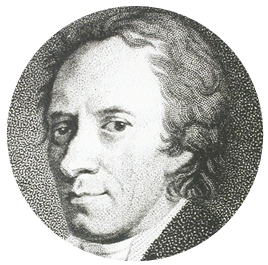 |
Johann Elert BodeJohann Elert Bode (1747 January 19, Hamburg, Germany – 1826 November 23, Berlin, Germany) was an astronomer. He was director of the observatory of the Prussian Academy of Sciences in Berlin. He reformulated the theory of Johann Daniel Titius (1729 – 1796) on the orbiting of our solar system’s heavenly bodies at semi-major axes in a function of planetary sequence. This became known as the Titius–Bode law (where a is the planet’s semi-major axis in astronomical units, and n the planet’s rank number, counting inside out): |
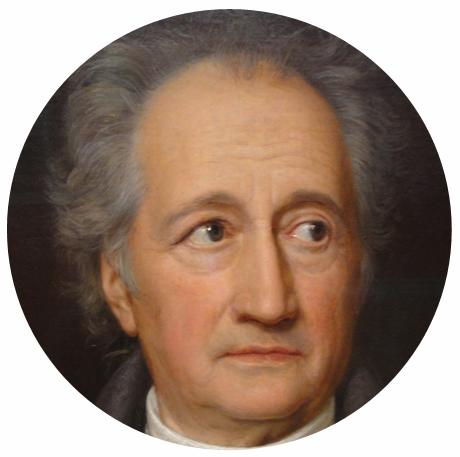 |
GoetheJohann Wolfgang von Goethe (1749 August 28 – 1832 March 22) was a German poet, playwright, novelist, statesman, theatre director, critic, artist, and most certainly also a scientist (with a clear understanding of God). His most famous play is titled Faust, which includes the poem that, translated, starts with Oh, happy he, who can still hope. |
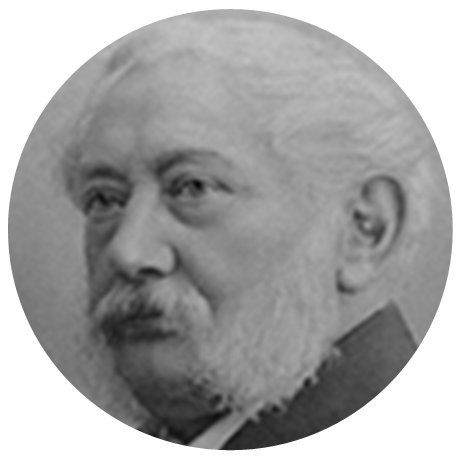 |
Wilhelm SchüßlerWilhelm Heinrich Schüßler (1821 August 21 – 1898 March 30) endeavored to find natural remedies, leading to a list of 12 Biochemic cell salts. |
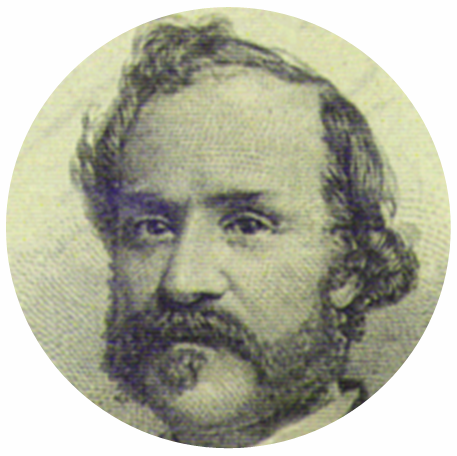 |
John KeelyJohn Ernst Worrell Keely (1827 September 3 – 1898 November 18) invented the “Keely Engine”. |
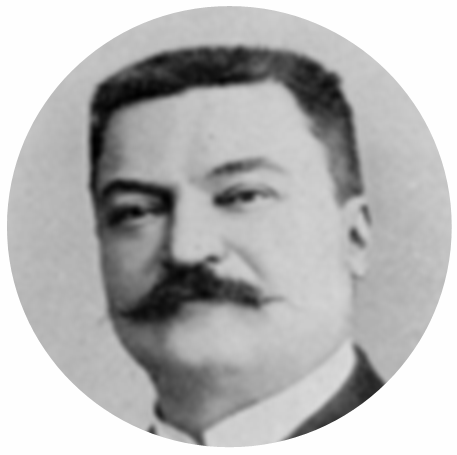 |
Édouard LucasFrançois Édouard Anatole Lucas (1842 April 4 – 1891 October 3) was a French mathematician who rediscovered the Khemitian number sequence, commonly known as ‘Lucas numbers’. |
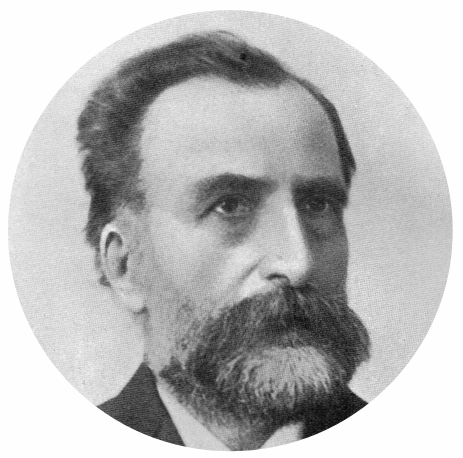 |
Julius HenselJulius Hensel (1844 April 30 – 1903) propagated mineral field fertilization with rock flour. |
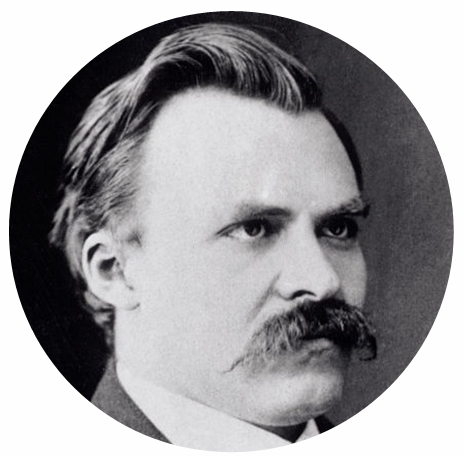 |
Friedrich NietzscheFriedrich Wilhelm Nietzsche (1844 October 15 – 1900 August 25) understood that the world above (“the stars”) is mirrored in the world within (“the psyche”), named “Astro-Psychology”. He also wrote the philosophical novel titled Also sprach Zarathustra (Thus spoke Zarathustra), “a Book for All and None”. |
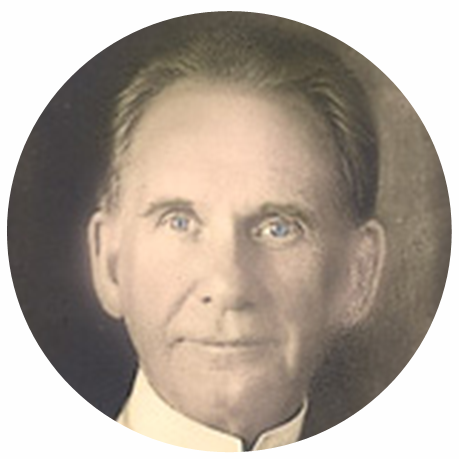 |
Otoman Zar-Adusht Ha’nishIn 1902, the German immigrant from Poznan, Poland, to Iran, named Otto Hanish (1844 December 19 – 1936 February 29) changed his name in Otoman Zar’adusht Ha’nish. He revived the legacy of Zoroaster (660 – 583 BCE). He named this revival of Zoroastrianism “Mazdaznan”. The words Maz Daz Nan mean “Master of Good Thought”. |
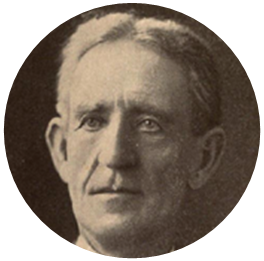 |
George W. CareyGeorge Washington Carey was born on 1845 September 7 in Dixon, Lee County, Illinois, USA. He developed a mineral-based theory of human disease by connecting the 12 basic cell salts as discovered by Wilhelm Heinrich Schüßler (1821 – 1898) to the 12 Zodiac signs. George W. Carey was the first to state that a human’s body is a “chemical formula in operation”. Aged 79, he died on 1924 October 17 in San Diego, California, USA. |
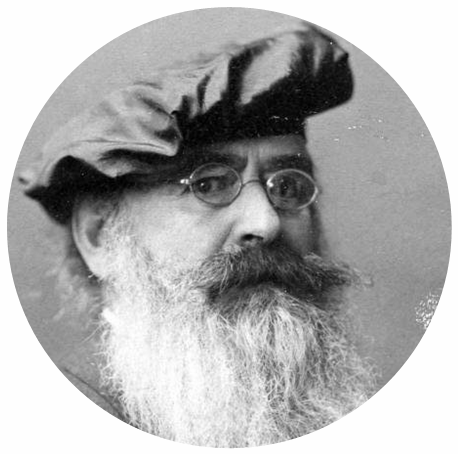 |
Guido von ListGuido von List (1848 October 5 – 1919 May 17) wrote the German book titled ‘Das Geheimnis der Runen’ (The Secret of the Runes). |
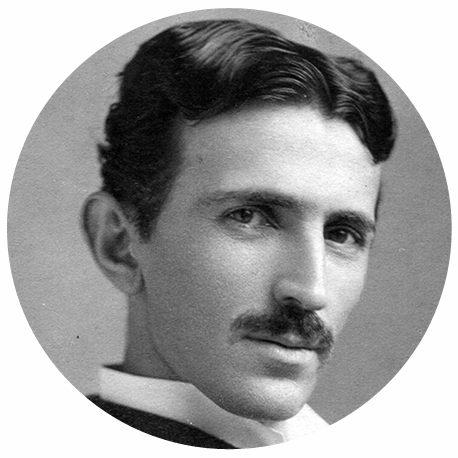 |
Nikola TeslaNikola Tesla (1856 July 10 – 1943 January 7) was the greatest inventor of modern time (and perhaps of all time). In an interview from 1899, he gave a lot of clues on how to find the Truth. For more on his work and life, read his autobiography. The last ten years of his life, he lived in a two-room suite (with room no. 3327) of the Hotel New Yorker in New York City. He was constantly spied on by the Office of Strategic Services (OSS), the forerunner of the CIA. For more on this, watch The Tesla Files. |
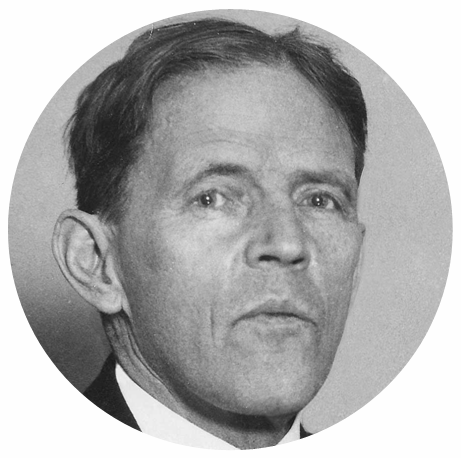 |
William BatesWilliam Horatio Bates (1860 December 23 – 1931 July 10,) developed an educational method for improving vision by undoing the habitual strain to see. |
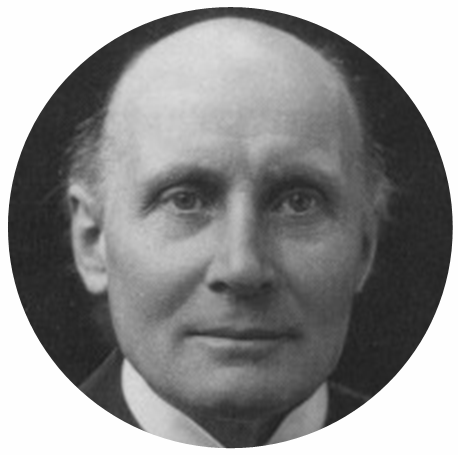 |
Alfred WhiteheadAlfred North Whitehead (1861 February 15 – 1947 December 30) stated that all self-organizing systems are processes in time. He considered matter to be the past, and mind to be the future. |
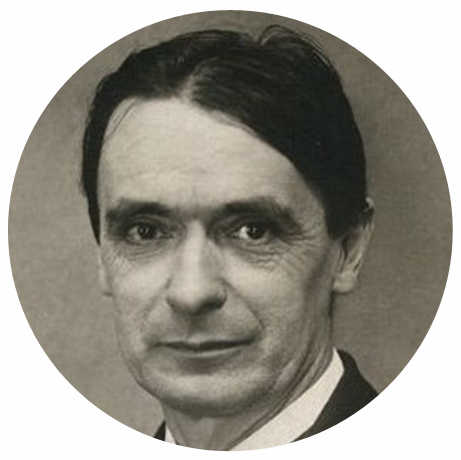 |
Rudolf SteinerRudolf Joseph Lorenz Steiner (1861 February 25 – 1925 March 30) developed anthroposophy. As a boy, he received a glimpse of Larger Picture, which he tried to understand with his mind during the remainder of his earthly life. He deserves credit for arousing interest in this Greater Picture. However, he failed to pave a successful path towards it, despite all his hard-to-digest writings. |
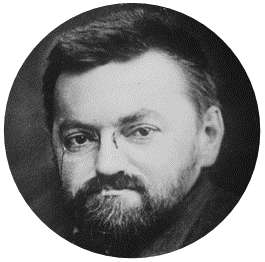 |
Charles Proteus SteinmetzKarl August Rudolph Steinmetz was born on 1865 April 9 in Breslau, Province of Silesia, Prussia (nowadays Wrocław, Poland) as the son of Karl Heinrich Steinmetz and Caroline Neubert. He suffered from dwarfism, hunchback, and hip dysplasia, as did his father and grandfather. As a gymnasium pupil, he astonished his teachers with his proficiency in mathematics and physics. In 1888, just before finishing his doctorate, he came under investigation by the German police for activities on behalf of a socialist university group and articles he had written for a local socialist newspaper. He therefore fled to Zürich, Switzerland, to escape possible arrest. Faced with an expiring visa, he emigrated to the USA in 1889. There, he changed his first name to “Charles” and chose the middle name “Proteus” (derived from Homer’s epic poem Odyssey, which describes a wise hunchbacked character with that name who knew many secrets). As a mathematician and electrical engineer, he became a professor at Union College (in the state of New York). He fostered the development of alternating current by formulating mathematical theories for engineers. He also made ground-breaking discoveries in the understanding of hysteresis. Aged 58, he died on 1923 October 26 in Schenectady, New York, USA. To tearn more about his work, read his book titled Elementary Lectures on Electric Discharges, Waves and Impulses, and Other Transients. |
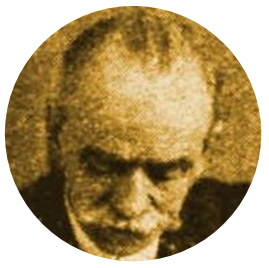 |
André BovisJustin Antoine Alfred Bovis was born on 12 January 1871 in Nice, France. Next to Antoine and Alfred, in English mostly André was used as his first name. As a physicist, he created a way to measure the the subtle life energy quality or vitality of both biological entities and food. He measured this with a pendulum or biotensor. The unit of measurement is expressed in what became known as Bovis units. Values below 6,500 Bovis units indicate a qualitative energetic deficiency, while values above 6,500 Bovis units indicate a higher quality. André Bovis died in Nice on 13 November 1947. |
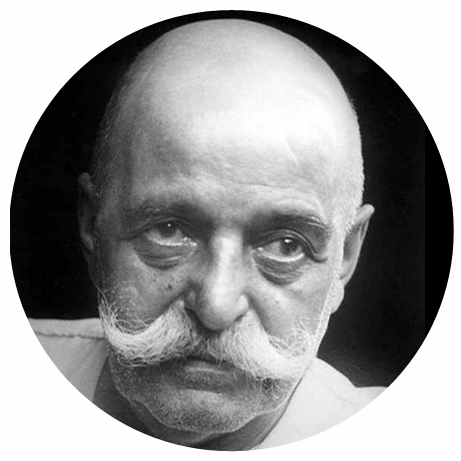 |
G.I. GurdjieffGeorge Ivanovitch Gurdjieff transferred the mystical Wholly knowledge from the East to the West. He was born on Saturday 13 January 1872 (which was 1 January 1319 of the Armenian Calendar) in the Greek district of the city of Alexandropol (later renamed as Gyumri) in western Armenia as Գեորգի Գյուրջիև (Georgi Gyurjiyev). His mother (Evdokia) was Armenian and his father (Yiannis Georgiades), who worked as a carpenter, was Greek. He received early tutelage from the dean of the military cathedral at Kars (in Turkey), who was a priest and family friend (named Borsh). As a young man, he journeyed across Central Asia, Egypt, and India. When his travels were over, he started to teach in Russia, where his name became Георгий Иванович Гюрджиев (Georgiy Ivanovich Gyurdzhiyev). In 1912, the 40 year old Gurdjieff married the 22 year old Julia Osipovna Ostrowska (born in Poland around 1890). Because of the Russian Revolution of 1917, he moved to Tbilisi, Georgia, where he opened the ‘Institute for the Harmonious Development of Man’ in 1919. In May 1920, due to the changed political conditions in Georgia, Master Gurdjieff closed this Institute, and he and his entourage moved to Constantinople, Turkey (nowadays known as Instanbul). From August 1921, Master Gurdjieff travelled around western Europe, lecturing and giving demonstrations of his work in various cities, such as Berlin, Germany, and London, UK. In the autumn of 1922, Gurdjieff went on to France, where he leased the Château du Prieure (des Basses Loges) at Fontainebleau-Avon, a little southeast of the French capital Paris, to house his institute there. Above the walls of the Study House at the Prieuré, he inscribed in a special script 38 Aphorisms. On 4 January 1924, Master Gurdjieff made his first (from in total nine) sail to the USA. Nine days later, he arrived in New York City on his 52nd anniversary. After returning to France, while driving alone from Paris to Fontainebleau on 8 July 1924, he had a near-fatal car accident. Nursed by his wife (known at the Institute as madame Ostrowska) and mother, he made a slow and painful recovery against medical expectation. Still convalescent, he formally disbanded his institute on 26 August 1924. Next, he decided to devote a third of his available time to writing. In 1925, Master Gurdjieff’s mother died. Next, his wife developed cancer and died on 26 June 1926. She was buried in Avon, France, beneath the large dolmen that faces Gurdjieff’s mother’s grave. Master Gurdjieff wrote three volumes of his written work under the title All and Everything (1. Beelzebub’s Tales to His Grandson, 2. Meetings with Remarkable Men, and 3. Life Is Real Only Then, When ‘I am’). These three series were announced during his lifetime in the book entitled The Herald of Coming Good. Master Gurdjieff never revealed the whole truth, especially not to those who were not ready for it. Also the parts Master Gurdjieff deliberately left out of his so-called “Fourth Way” are included in Wholly Science. Furthermore, in Views from the Real World, his pupils recollected Master Gurdjieff’s early talks in Moscow, Essentuki, Tbilisi, Berlin, London, Paris, New York, and Chicago. Aged 77 years old, Master Gurdjieff died on Saturday 29 October 1949 in Neuilly-sur-Seine, a French commune just west of Paris. |
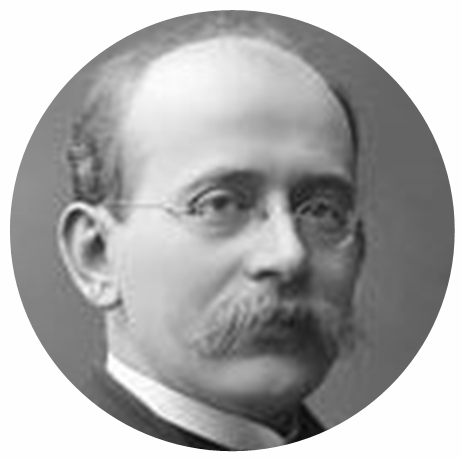 |
Kristian BirkelandKristian Olaf Birkeland (1867 December 13 – 1917 June 15) from Norway was one of the founders of Plasma Cosmology, also known as the Electric Universe Theory. |
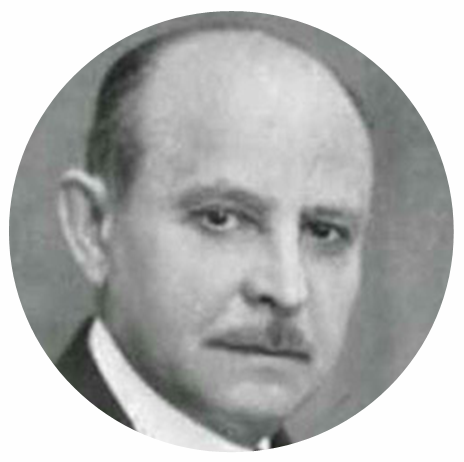 |
Georges LakhovskyGeorges Lakhovsky (1869 – 1942) was a bioelectric pioneer who invented the Multi Wave Oscillator. He wrote a book on his discoveries titled “The Secret of Life”. |
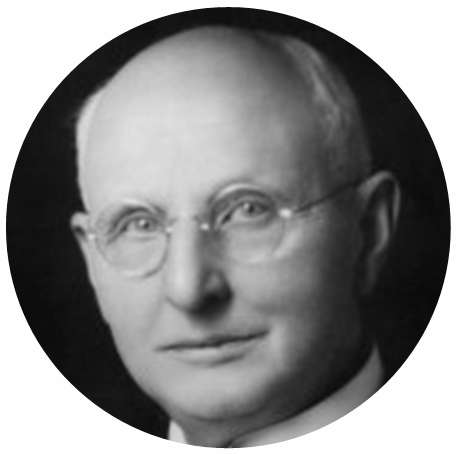 |
Weston PriceWeston Andrew Valleau Price (1870 September 6 – 1948 January 23) showed the relationship between unhealthy nutrition and physical degeneration. |
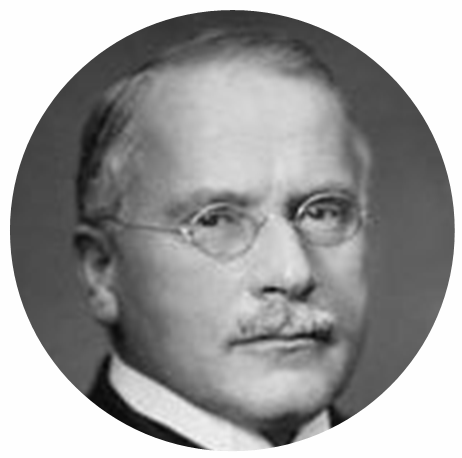 |
Carl JungCarl Gustav Jung (1875 July 26 – 1961 June 6) stressed the collective aspects of the subconscious mind and the various archetypes in it. |
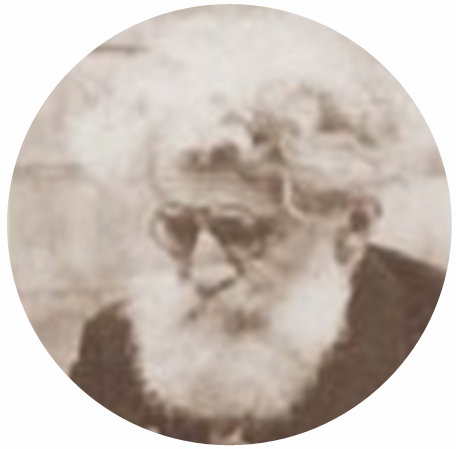 |
Louis BoutardLouis Boutard (1880 February 4 – 1958 April 8) was able to create organic life from inorganic matter by the application of what he referred to as “Aether conduction”, based on his understanding of the origin of both electricity and magnetism. (More information on his work is available on RexResearch.com.) |
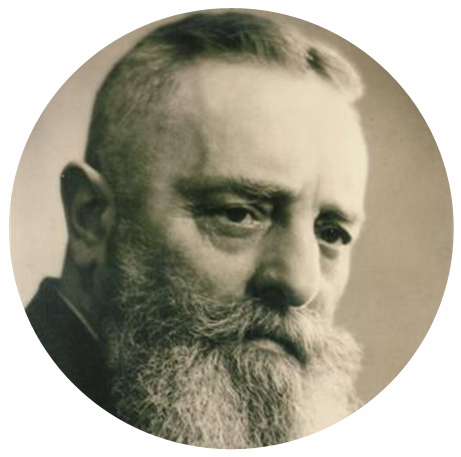 |
Viktor SchaubergerThe work of Viktor Schauberger (1885 June 30 – 1958 September 5) is presented in episode 12 of Pateo TV. |
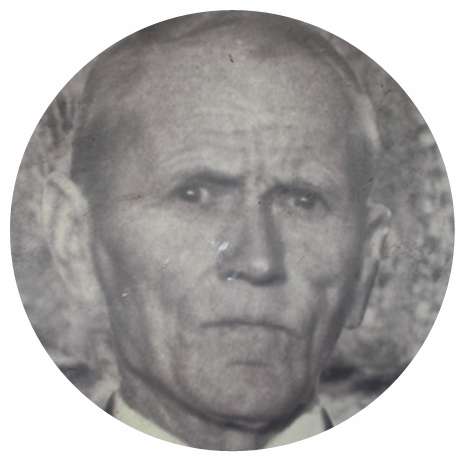 |
Edward LeedskalninEdvards Liedskalniņš (1887 August 10 – 1951 December 7), a Latvian emigrant to the USA, where his name became Edward Leedskalnin, was a self-taught engineer and sculptor who single-handedly built “Coral Castle” in Florida, USA. In 1945, his study book titled ‘Magnetic Current’ was published. |
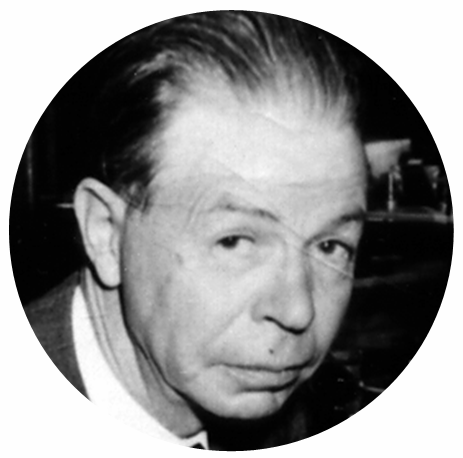 |
Royal RifeRoyal Raymond Rife (1888 May 16 – 1971 August 5) developed a frequency instrument that restored the natural ability of self-healing. |
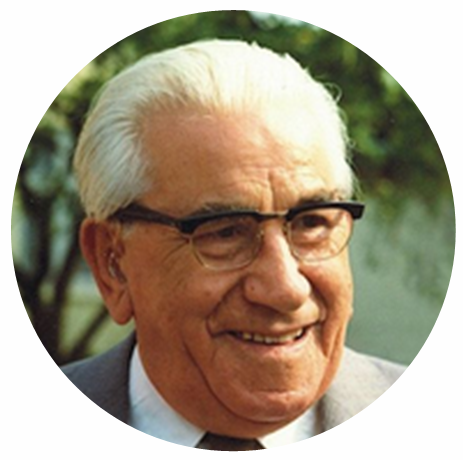 |
MartinusMartinus Thomsen (1890 August 11 – 1981 March 8) connected the understanding of the physical world with the understanding of the spiritual world in what became known “Martinus Cosmology”. Simply ignore some errors that he ignorantly copied from scientism and Christianity. |
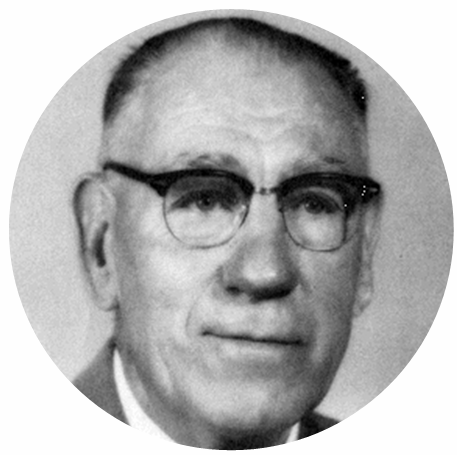 |
Henry MorayThomas Henry Moray (1892 August 28 – 1974 May 1) was a talented designer of electronic circuits who discovered a source of energy transmission apparently available everywhere. Using advanced ideas in solid state detectors, he developed a power source that produced 50,000 watts of a cold form of electricity. Dr. Moray named it Radiant Energy. |
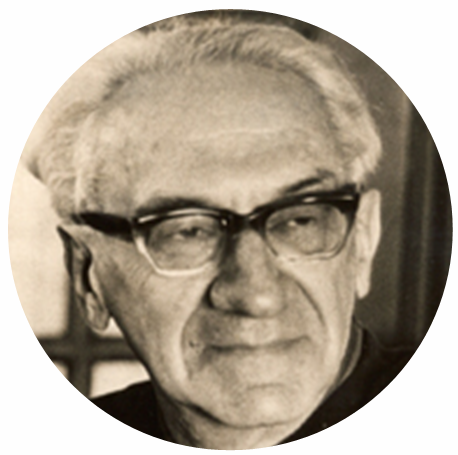 |
Immanuel VelikovskyImmanuel Velikovsky (1895 June 10 – 1979 November 17) claimed that Venus only relatively recently arrived in her current orbit. That claim is correct (and therefore his name is on this honorary list), though however most of his other claims were false. Also his friendship with pseudo-scientist Albert Einstein was very suspicious, to say the least. |
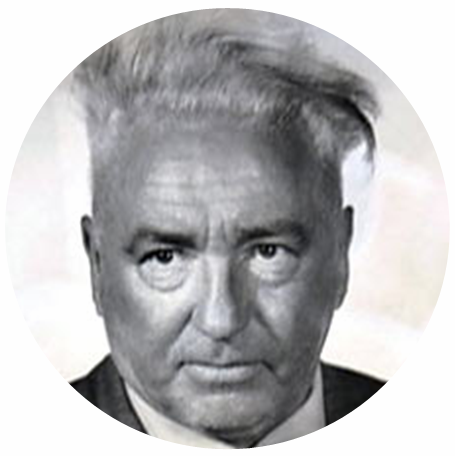 |
Wilhelm ReichWilhelm Reich (1897 March 24 – 1957 November 3) discovered how to concentrate life energy through a mixture of resin, filings (aluminum and copper), crystals, gemstones, and copper, which he called “Orgonite” (based on “Orgone”, which is one of many names for life energy, like Chi, Ki, Prana, Vril, Pneuma, and Mana). His research showed that cancer is the effect of bio-energetic shrinking following emotional resignation. He also invented a machine for cloudbusting. |
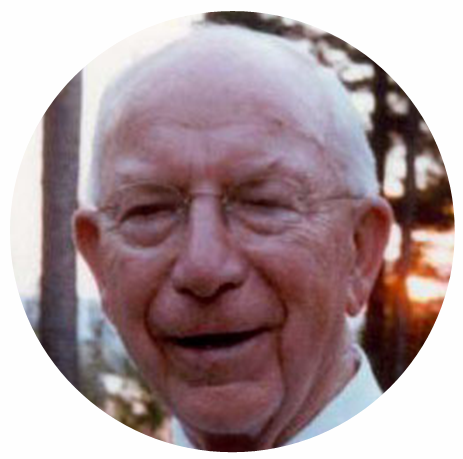 |
Dewey LarsonDewey Bernard Larson (1898 November 1 – 1990 May 25) was an engineer from the USA, and the originator a comprehensive theoretical framework (named the “Reciprocal System”), claimed to be capable of explaining all physical phenomena from subatomic particles to galactic clusters. |
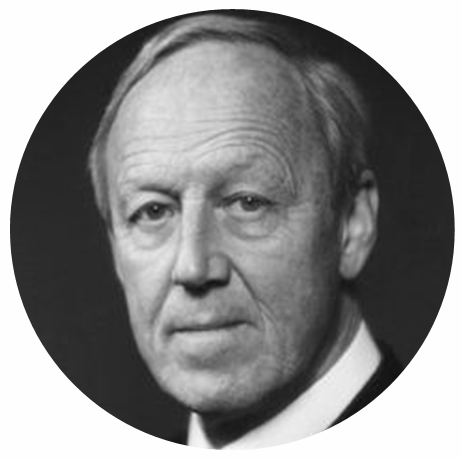 |
Hannes AlfvénHannes Olof Gösta Alfvén (1908 May 30 – 1995 April 2) from Sweden was one of the founders of Plasma Cosmology, also known as the Electric Universe Theory. |
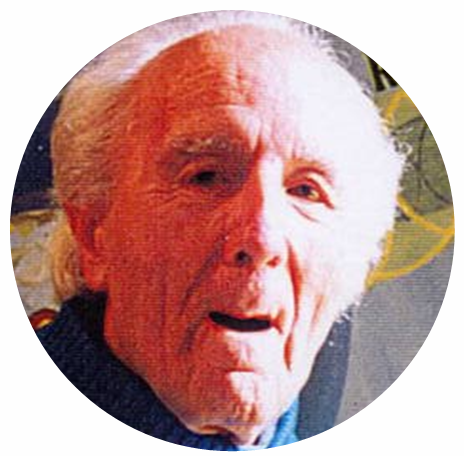 |
Pier IghinaPier Luigi Ighina was born on 1908 June 23 in Milan, Italy. He introduced the concept of the pulsing “magnetic atom”. According to his theory, waves of magnetic atoms are continuously exchanged between Helios and Terra, with a proper frequency and shape. After these magnetic atoms are scattered into magnetic monopoles, the interactions between these magnetic monopoles provide the basis for both life and matter. Pier Ighina also put his theory into practice by building a machine that prevent earthquakes, and another machine that makes it rain. Pier Ighina died on 2004 January 8 at Imola, in the Italian province of Bologna. |
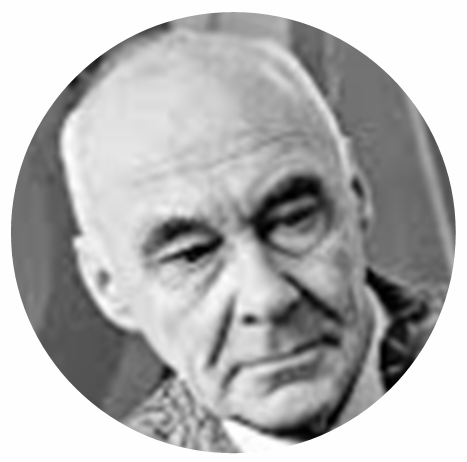 |
Nikolai KozyrevNikolai Aleksandrovich Kozyrev (1908 September 2 – 1983 February 27) was a Russian astronomer and astrophysicist who proved the existence of Torsion Fields. He also developed a Theory of Time, however his concept of “time” is related to the Aether. He also referred to Torsion Fields as “flow of time”. |
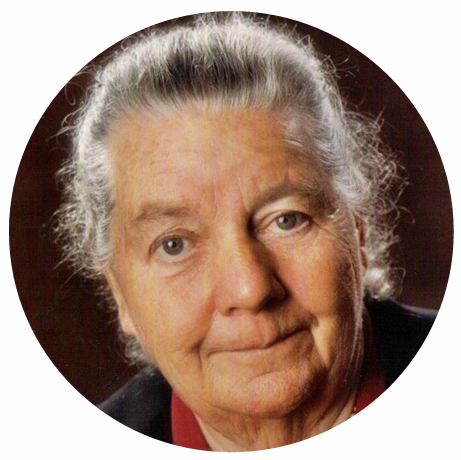 |
Johanna BudwigJohanna Budwig (1908 September 30 – 2003 May 19) conducted groundbreaking research on cell respiration. |
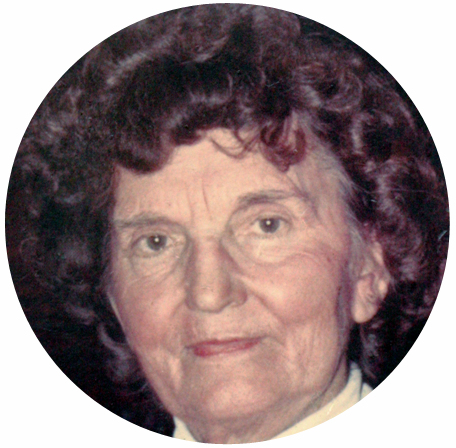 |
Ann WigmoreAnna Marie Warapicki was born in Lithuania on 1909 March 4 as the daughter of Antanas Warapicki (1877 – 1959) and his wife Anna (born in 1882). In 1908, father Antanas emigrated to the USA, settling in Middleboro, Massachusetts. Mother Anna followed her husband five years later, arriving at Ellis Island on 1913 June 16. On 1922 December 9, the 13-years-old Anna Marie and her 15-years-old brother Mykola, accompanied by an uncle, arrived at Ellis Island, in order to join their parents and their younger sister Helen (born on 1921 February 19 in Middleborough, Massachusetts. Later, she moved to Bristol, Massachusetts, where she worked as a hospital maid under the name of ‘Anna Warap’. On 1930 December 25, she married Everett Arnold Wigmore (1907 – 1969). During her marriage, she lived in Stoughton, Massachusetts, where their daughter Wilma Edith Wigmore, was born on 1941 July 9. On 1942 January 12, she became an USA citizen. Later, Anna and Everett divorced, but she kept on naming herself ‘Ann Wigmore’. In the 1940s, Ann Wigmore started to promote the benefits of wheatgrass and other raw foods in order to detoxicate (or ‘detox’). In 1956 in Stoneham, Massachusetts, she co-founded the Hippocrates Health Institute, which later moved to West Palm Beach, Florida. Next, the Ann Wigmore Foundation was founded in 1987 in Boston. In 1990, she opened the Ann Wigmore Natural Health Institute in Puerto Rico. She wrote about twenty five books, and lectured on her ideas in the USA, Canada, and Europe. Ann Wigmore died in Boston on 1994 February 16. |
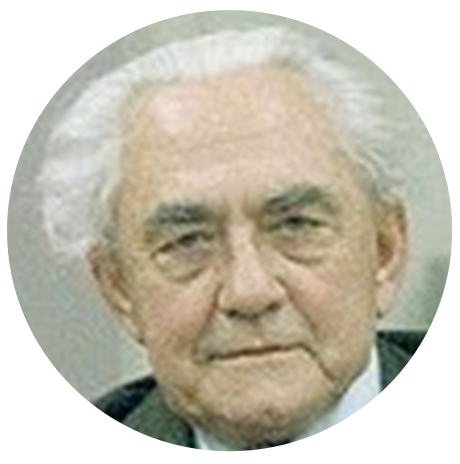 |
Samuel Warren CareySamuel Warren Carey was born on 1911 November 1 on a farm three miles from Campbelltown, near of Sydney, New South Wales, Australia. As a professor at the University of Tasmania, he was the forerunner of veracious Geology, based on the persistent growth of our home planet Terra. He wrote three books: The Expanding Earth (1976), Theories of the Earth and Universe (1988), and Earth, Universe, Cosmos (1996). He was an outspoken adversary of the erroneous continental drift theory (but the deceitful Wikipedia claims that he allegedly was an early “advocate” of this theory). Samuel Carey died on 2002 March 20 in Hobart, Tasmania. |
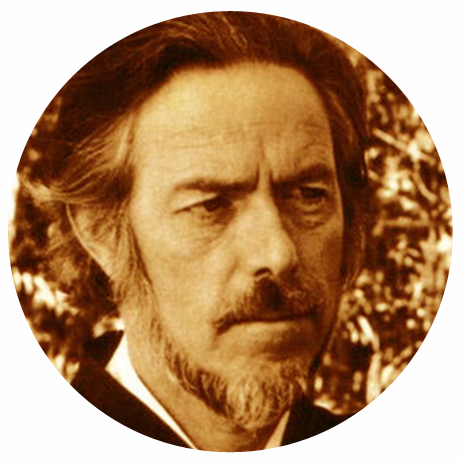 |
Alan WattsAlan Wilson Watts (1915 January 6 – 1973 November 16) made Eastern philosophy comprehensible for the Western audience. |
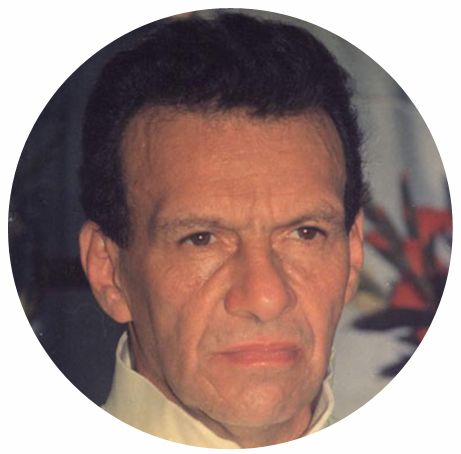 |
Samael Aun WeorVíctor Manuel Gómez Rodríguez (1917 March 6 – 1977 December 24), born in Colombia, was the founder of the Gnostic Movement, and author of over seventy books. For that, he deserves credit, even though there are some essential errors in his work regarding the true meaning of Gnosticism. Furthermore, he also believes in the non-existing Photon Belt. |
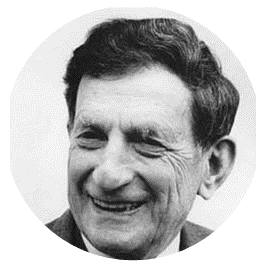 |
David BohmDavid Joseph Bohm was born on 1917 December 20 at Wilkes-Barre, Pennsylvania, USA, as the son of Samuel Bohm (born in 1892 September 17 at Munkacs, Hungary) and Freda Popky (born in 1892 at Lithuania), who were both Jewish immigrants. In his teenage years, David Bohm became an agnostic. In 1940, he became member of the theoretical physics group (named the Berkeley Radiation Laboratory, or Rad Lab for short) directed by Robert Oppenheimer (1904 – 1967) at the University of California. His scientific contributions concerned both quantum mechanics and relativity theory. However, due to his short membership of the Communist Party, the scattering calculations in his dissertation manuscript were recognized as having weapons applications and immediately classified and confiscated. Nevertheless, David Bohm still received his doctorate after Oppenheimer assured the Berkeley physics department that Bohm’s work was worthy of the degree. In spite of his security issues, Bohm continued to work on the Manhattan Project throughout 1943. After having to leave this project in 1944, he remained at Berkeley through 1946 as a post-doc. Next, Bohm became an assistant professor at Princeton University, where he also worked with Albert Einstein (1879 – 1955) at the nearby Institute for Advanced Study. In 1949, he was called upon to testify because of his previous ties to suspected communists, where he refused to give evidence against his colleagues. In 1950, Bohm was arrested for refusing to answer the committee’s questions. He was acquitted in 1951 May, but Princeton had already suspended him. In 1951, also his first book titled “Quantum Theory” was published, and well received. Next, he was forced to flee from the USA as an alleged “communist”, and went to Brazil, where he arrived on 1951 October 10. He worked at the University of São Paulo. In 1955, Bohm relocated to Israel, where he spent two years working at the Technion, at Haifa. There, he met Sarah Woolfson (“Saral”), whom he married on 1956 March 14. In 1957, they moved to England, where Saral was born. In 1961, Bohm was made professor of theoretical physics at the Birkbeck College of the University of London. Throughout his time in London, Bohm collaborated extensively with quantum physicist Basil Joseph Hiley (born on 1935 November 15 in Myanmar, Burma). In 1987, Bohm became emeritus, but he continued his work on a causal, nonlocal interpretation in quantum physics. His main concern was with understanding the nature of reality in general and of consciousness in particular as a coherent whole, which according to Bohm is never static or complete, but rather an unfolding process. In his theory called the ‘Implicate Order’, Bohm proposes that matter and life exist as one whole, coherent domain. He argued that the nature of reality could not be reduced to segments, and that we create separateness through our own thoughts. Aged 74, David Bohm died after suffering a heart attack in a taxi at Hendon, London, on 1992 October 27. |
 |
Itzhak BentovItzhak “Ben” Bentov (1923 August 9 – 1979 May 25) revealed important features of consciousness. |
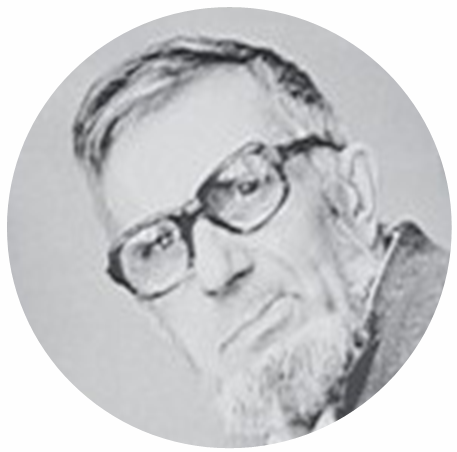 |
Viktor GrebennikovViktor Stepanovich Grebennikov (1927 April 23 – 2001 April 10) discovered the cavity structural effect. |
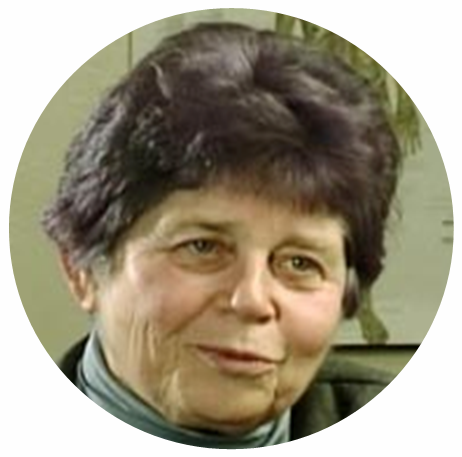 |
Hulda ClarkHulda Regehr Clark (1928 October 18 – 2009 September 3) practiced and described a large variety of natural healing methods. |
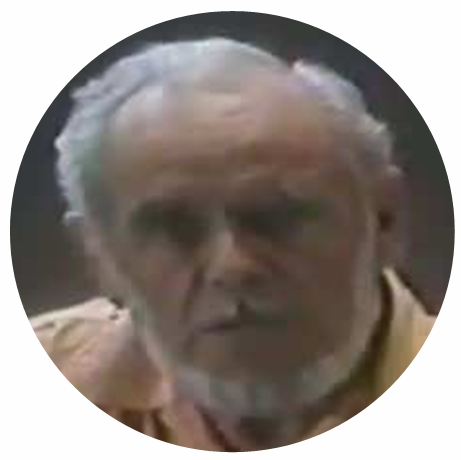 |
Les BrownLes Brown was a leading researcher of crystals and the power of geometry to affect the physical world. He wrote a book about the pyramid shape, and shared his understanding of crystals. He died in the 1980’s. |
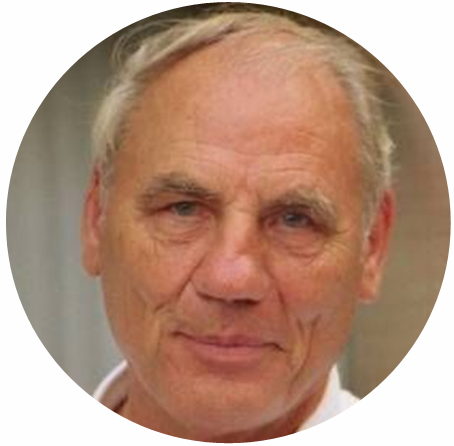 |
Ryke Geerd HamerRyke Geerd Hamer was born 1935 May 17 in Mettmann, in the middle of North Rhine-Westphalia, Germany. He studied medicine and theology at the University of Tübingen, where he met Sigrid Oldenburg. Both became physicians. After he passed the medical state examination in 1959, he received his doctorate in 1963. In 1972, he became a specialist in internal medicine. Ryke Geerd Hamer and his wife Sigrid got four children. After a daughter, their first son, Dirk Geerd Hamer, was born on 1959 March 11. Next, another son followed, and another daughter. On 1978 August 18 at 3 a.m., his 19-years old son Dirk was accidentally shot by Vittorio Emanuele of Savoy (born 1937 February 12). Four months later, on 1978 December 7, the mortally wounded Dirk Hamer died in the arms of his father. This severe shock caused the development of cancer cells in the testicles of Ryke Geerd Hamer, which led him to re-discover the biological principals underlying human coping mechanisms. At first, he named his discovery ‘Germanic New Medicine’. Later, he renamed it to ‘Healing Science’ (or Heilkunde in German). The website of Caroline Markolin explains his life work rather well. After he started to share his discovery via articles and books, the ‘powers-that-should-not-be’ tried to silence him in every possible way, including several attempted assassinations. At first, he fled to Spain, and in 2007 to Norway. In the late evening of Sunday 2017 July 2, in Sandefjord, Norway, the 82-years-old Geerd Hamer passed away after a stroke. |
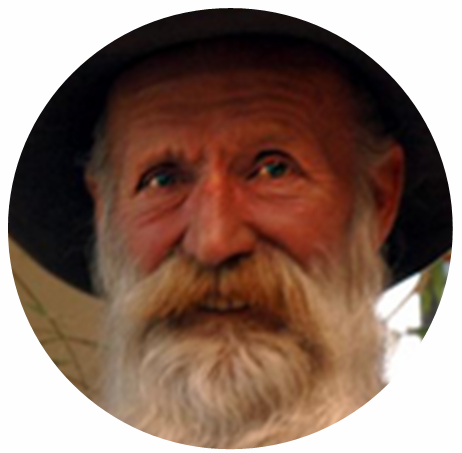 |
Slim SpurlingSlim Spurling (1938 July 3 – 2007 November 12) developed harmonizers that emit a pulsing cosmic light field, which create a positive harmonizing output. |
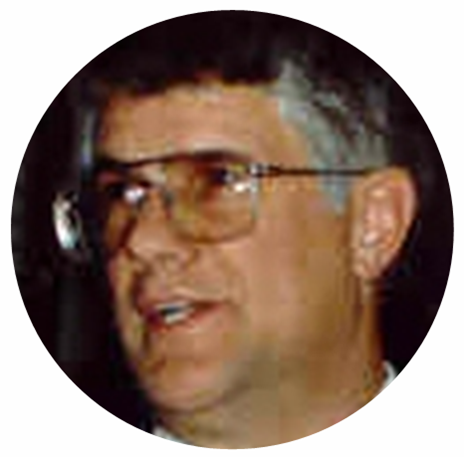 |
Stanley MeyerStanley Allen Meyer (1940 August 24 – 1998 March 20) developed Water Fuel Cell technology. At the age of only 57 years, he was murdered by poisoning to put his revealing work to a halt. |
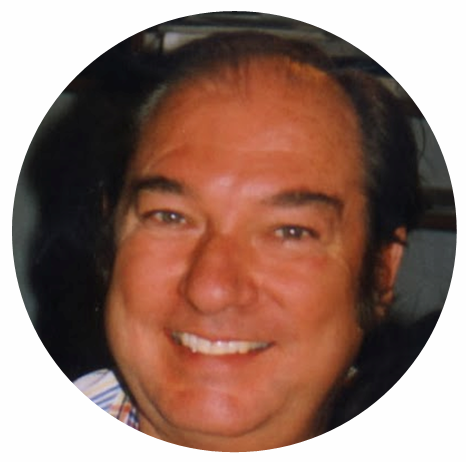 |
Bill CooperWilliam Milton Cooper (1943 May 6 – 2001 November 6) wrote the book “Behold a Pale Horse” (1991). Shortly after midnight on 2001 November 6, Bill became deadly wounded in a gunfight with local sheriff's deputies. He died shortly after. Clearly, he was murdered as he was revealing the truth about the powers that should not be. |
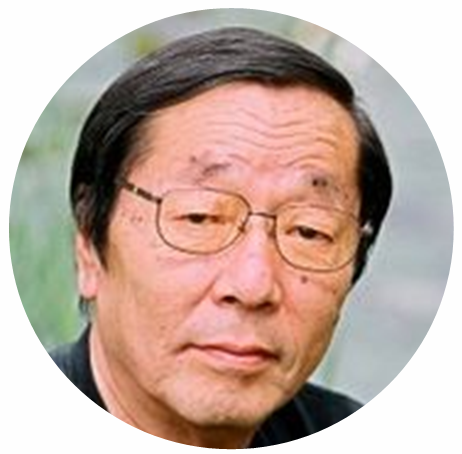 |
Masaru EmotoMasaru Emoto (1943 July 22 – 2014 October 17) proved that water has memory. His website was Masaru-Emoto.net. |
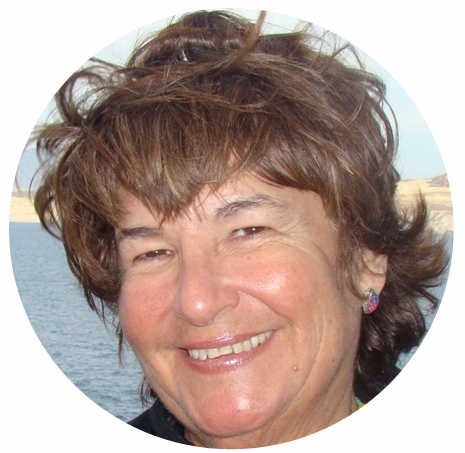 |
Candace PertCandace Beebe Pert (1946 June 26 – 2013 September 12) discovered the cellular binding site for endorphins in the brain. |
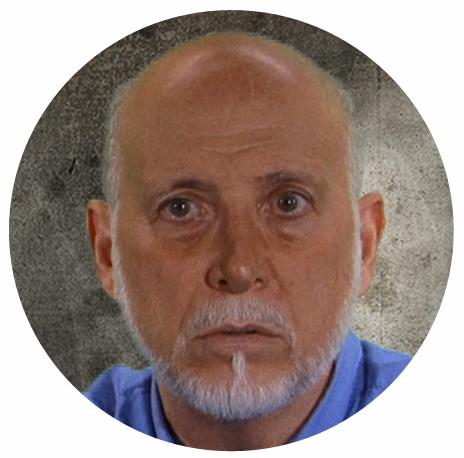 |
Lloyd PyeLloyd Anthony Pye (1946 September 7 – 2013 December 9) proved that human beings are created via genetic engineering. Human DNA has more than 4,000 defects compared with only a few hundred in chimpanzees and gorillas. Pye’s work shows that there is evidence of gene segments that have been cut, flipped, and reinserted upside down back into genome. Chromosomes have also been fused together which is why human beings appear to have two fewer than ape beings. Such fusions are only seen in laboratories. |
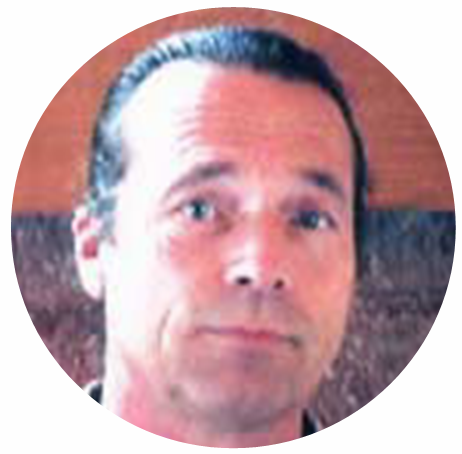 |
Ian LungoldPhilip Louis Weime was born on 1949 January 26 (12 Ahau). He became a scholar of the authentic Mayan calendars. He renamed himself Ian Xel Lungold. He died at the age of only 56 years on 2005 November 16 (9 Etznab). His life mission was to restore the authentic Mayan calendar of the Tzolkin. |
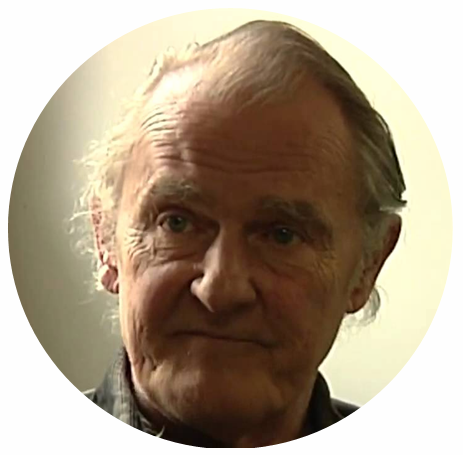 |
Paul PantonePaul Pantone (1950 April 8 – 2015 December 14) invented of a self-induced plasma generator named GEET. This abbreviation stands for “Global Environmental Energy Technology”. Two months before his death, he was interviewed on Pateo Radio. |
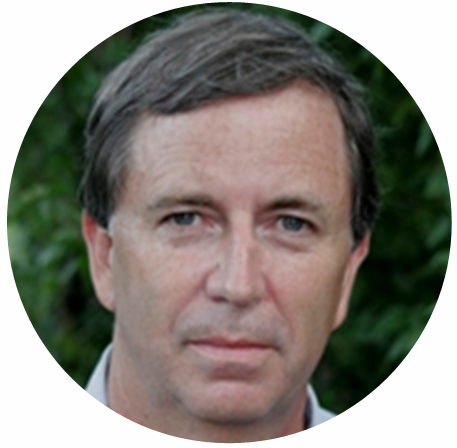 |
John BurkeJohn A. Burke (1951 November 13 – 2010 February 26) investigated the electromagnetic features of ancient buildings. |
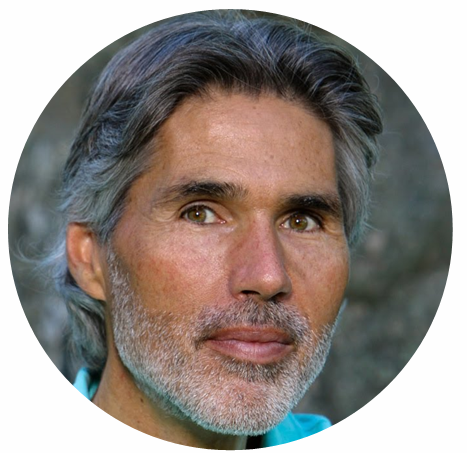 |
Andreas MoritzAndreas Moritz (1954 January 27 – 2012 October 21) developed a liver cleansing method (similar to the one developed by Hulda Clark). He also wrote the book titled ‘Cancer is not a Disease – It’s a Survival Mechanism’. |
This PateoPedia webpage on Wholly Science Wayshowers, written by Johan Oldenkamp, is also available in German.
© Pateo.NL : This page was last updated on 2024/02/28.